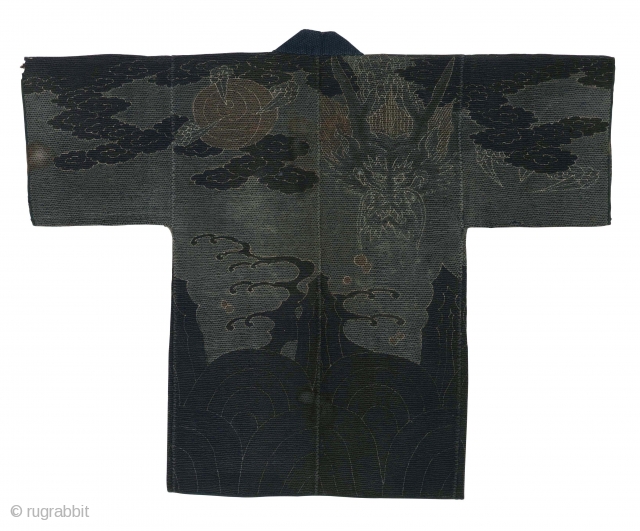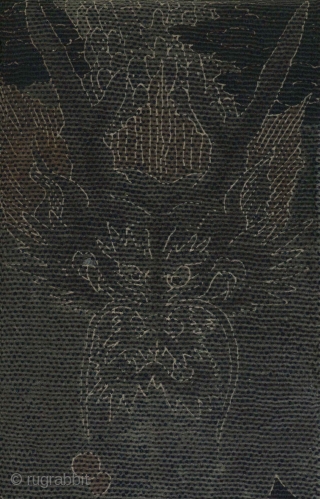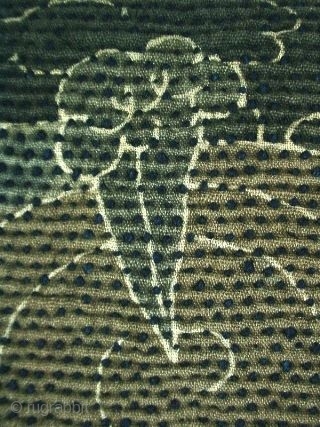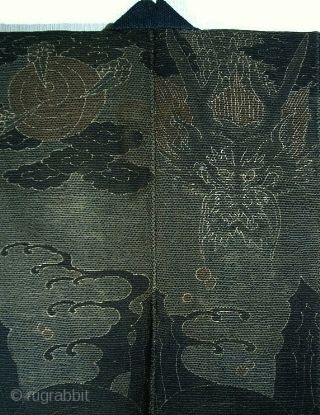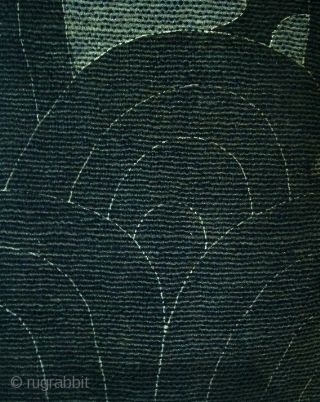Back
Banten with Dragons.
Meiji Period, circa 1880, 88x117cm.
Given the high risks, being firefighter in Japan in old days was a job that required a great organization and a good dose of courage. Natural that the Shogun (as it was called the highest political and military leaders in medieval Japan and the Edo period) entrusted the caste nearest to him, the military (samurai), to manage the problem. They were then samurai, first in exclusive mode later with functions of control or coordination only, to compose the brigades of firefighters and to perform acts of extreme courage. Situations requiring public recognition. From the seventeenth century, the corporal tattoos pictorial character became current trend among upper class Japanese’s. This body art had symbolic connotations, referred to his own value of the person tattooed, and sometimes came to cover most of the body, which was then publicly exposed during the holidays or other celebrations. All this came to an end with Meiji in 1872 that banned altogether body tattoos, leaving them as exclusivity of organized crime, which still uses it.
The brave samurai had to invent something new to exhibit their 'credits', and began to paint the inside of their banten with the same grounds of prohibited tattoos, thus contributing to the realization of real extremely expensive works of art, and consequently exclusive preserve of the upper classes.
One of the favourite motifs to decorate kajibanten was the dragon, divine creature would and beneficent like the phoenix, and symbolizes the protective forces of water. Often depicted along with a tiger, in our case we see him suspended between the clouds and sea waves.
price:
Please enquire
- Home
- Antique Rugs by Region
- Category
- Profiles
- Post Items Free
- Albums
- Benaki Museum of Islamic Art
- Budapest: Ottoman Carpets
- Gulbenkian Museum
- Islamic Carpets. Brooklyn
- Islamic Textiles. Brooklyn
- Konya Museum: Rugs
- MKG, Hamburg
- MMA: Caucasian Carpets
- MMA: Mamluk Carpets
- MMA: Mughal Indian Carpets
- MMA: Ottoman Carpets
- MMA: Safavid Persian Carpets
- MMA: Turkmen Rugs
- McCoy Jones Kilims
- Ottoman textiles. Met
- Philadelphia Museum
- Rugs and Carpets: Berlin
- Seljuqs at the Met
- TIEM, Istanbul: Carpets
- V&A: Classical Carpets
- Vakiflar Carpets: Istanbul
- Baluch Rugs: Indianapolis
- Gallery Exhibitions
- Jaf an Exhibition
- Alberto Levi Gallery
- Andean Textile
- Christie's London: 2016
- Francesca Galloway
- HALI at 40
- ICOC Washington, DC 2018
- Jajims of the Shahsavan
- London Islamic Week April, 2018
- Mongolian Felts
- Navajo Rugs: JB Moore
- Persian Piled Weavings
- SF Tribal & Textile Art Show 2020
- SF Tribal 2019
- Sotheby's: C. Alexander
- Turkish Prayer Rugs
- Turkmen Main Carpets ICOC 2007








